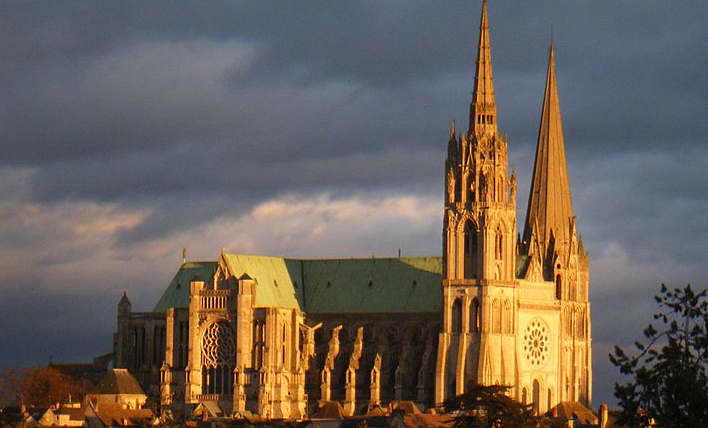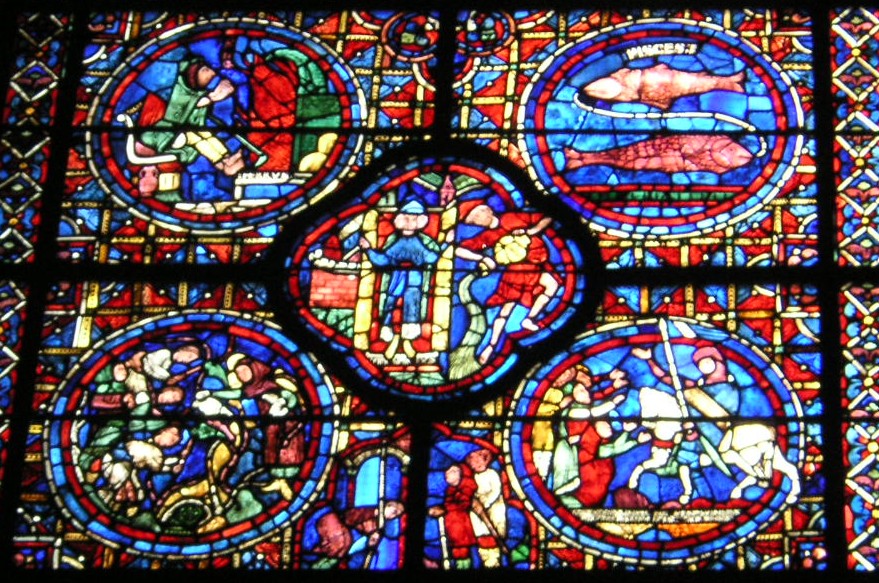Notre Dame Cathedral at Chartres,

A physical and a meta-physical theme park ?
This Cathedral is a milestone in the development of Western architecture because it employs all the structural elements of the new Gothic architecture: the pointed arch; the particular rib-&-panel vault; and, most significantly, the flying buttress.
It is also celebrated for its many stained-glass windows and sculptures. Because most of its 12th-and 13th-century stained glass and sculpture survives, Chartres Cathedral is one of the most completely surviving medieval churches. The first Christian church was erected on that spot around 350 A.D. It was subsequently destroyed 5 times by fires and wars.
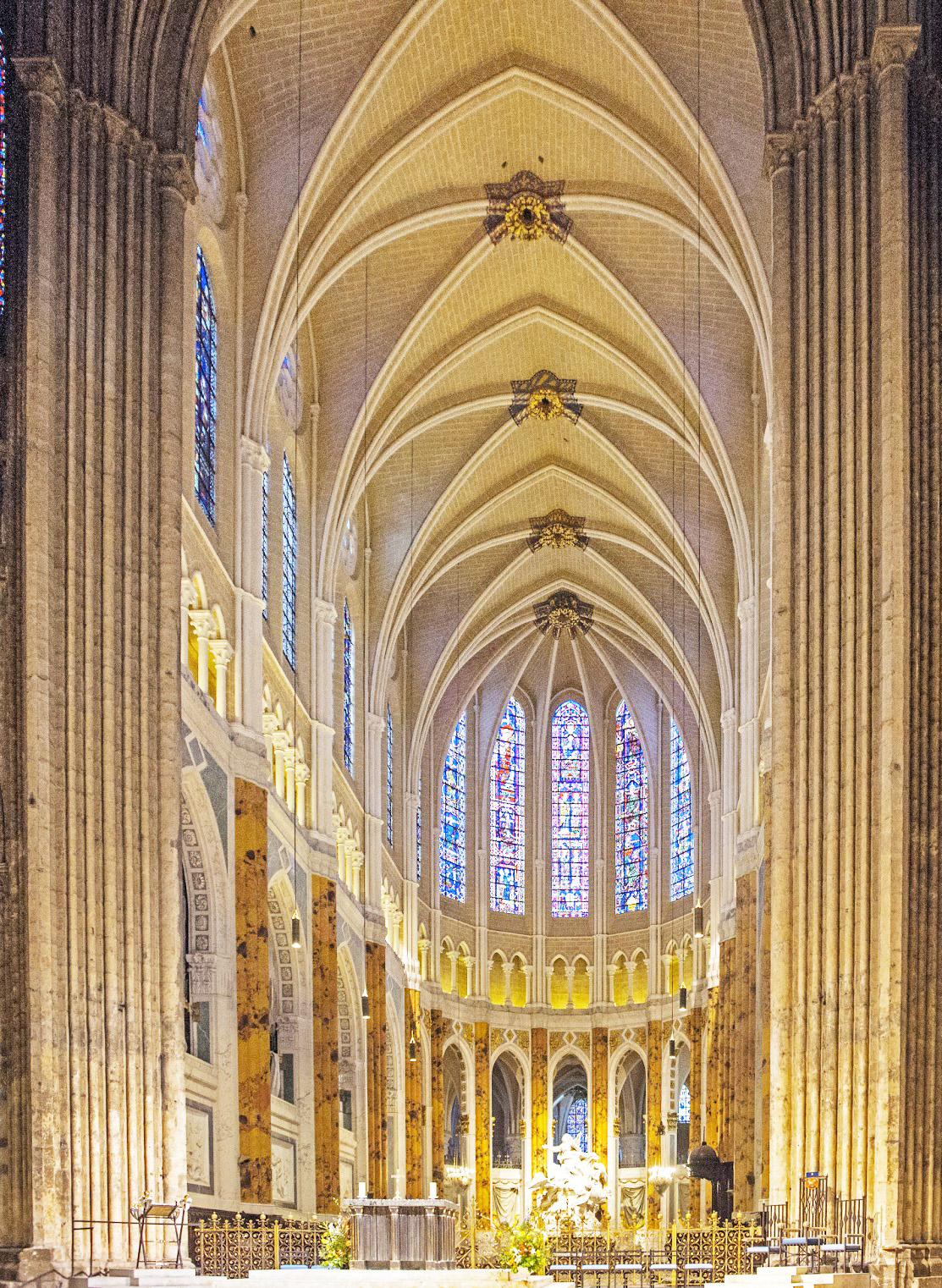
Its spiritual intensity is heightened by the fact that no direct light enters the building. It is filtered through stained glass, so that the whole experience of visiting this Cathedral feels out of this world".

The interior of the cathedral is remarkable. The nave, wider than that of any other cathedral in France (16 meters), is in the purest 13th-century ogival style.
The warm glow of the light inside the cathedral results from the ≈ 180 irreplaceable & beautiful stained-glass windows.

The Cathedral was built following a fire that largely destroyed the previous church in 1194. The new walls, roof and choir were finished by 1221. In 1260 the building was completed and consecrated as one of the most compelling expressions of the strength and poetry of medieval men & women.
(time 30:30)
A major impulse of the Cosmic Christ began: 1250 AD
Men's spirit felt impelled to express with the greatest possible precision
how men's heart & mind can look upward
to the divine being beyond all existing hierarchies.
The city of Chartres owed its prosperity as a marketplace to its bishop, who combined the secular with the sacred by organizing four annual trade fairs on the four feasts of the Virgin Mary, to whom the cathedral was dedicated: Nativity, Annunciation, Purification and the Assumption.
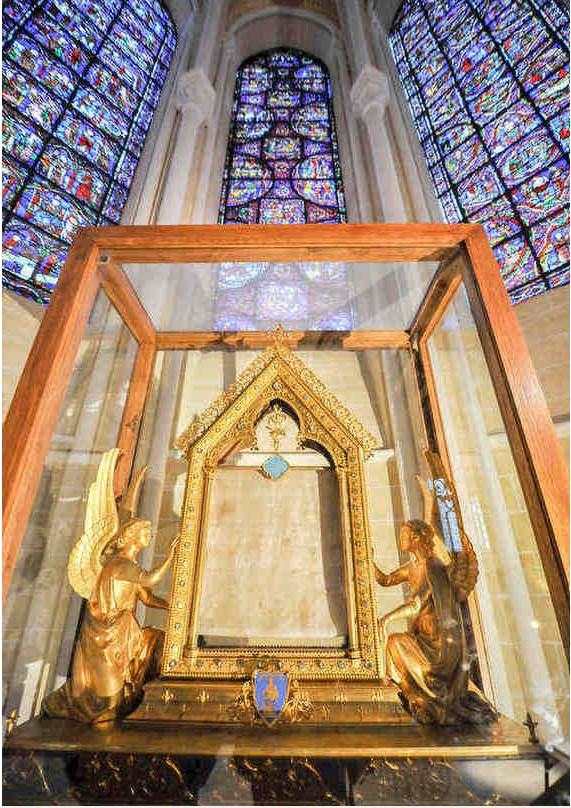
Golden jeweled Reliquary donated by Pope Innocent III in 1214
to house a fragment of Mary's-veil.
The choice was colored by the claim of the Cathedral to possess the robe that Mary wore when giving birth to Jesus.
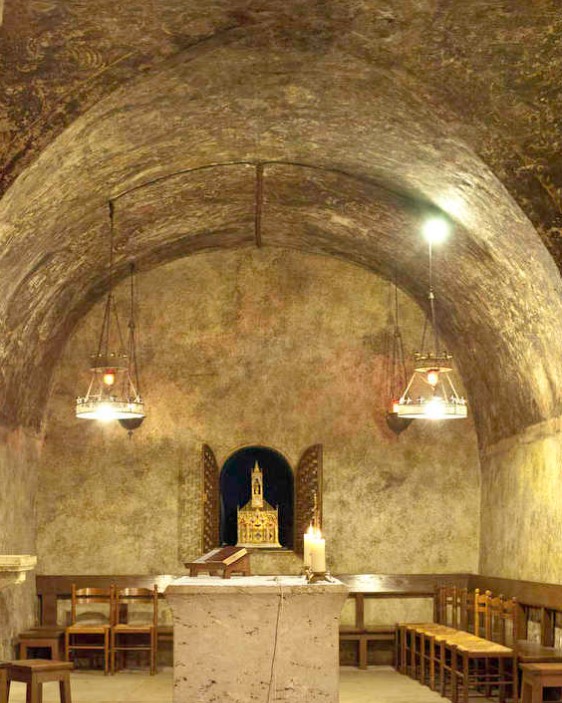
Another robe fragment was placed sous-terre,
in the Grotto, which has many chambers. It was
once the most important Druidic sanctuary of Gaul,
which was later turned into the crypt of the cathedral.
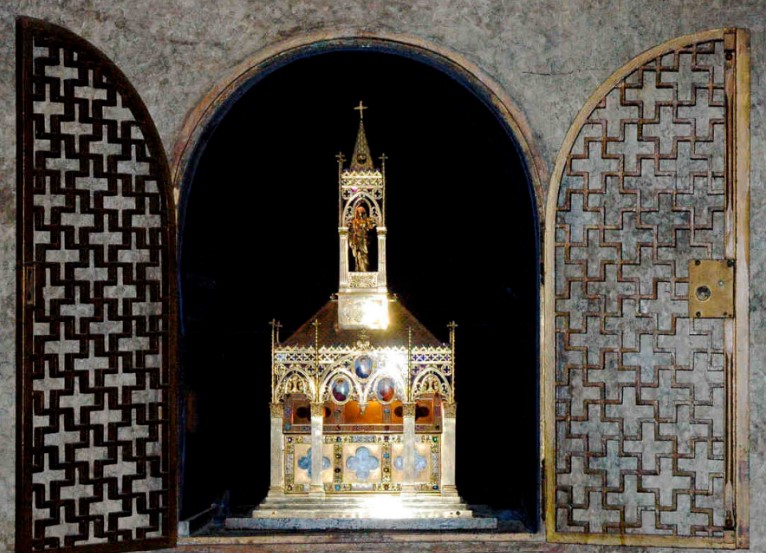
closer-ups
In Gallo-Roman times, when Gaul and Roman cultures merged, a temple to Persephone, Queen of the Underworld, was erected on top of the Druidic grotto.
Persephone was the daughter of Demeter, the Earth-Mother, and Zeus, the Sky-Father. So, the Druidic Great Mother and Child became Persephone and Demeter before they once again changed their personas, in order to become Mary and Jesus, and Persephone became Our Lady Under the Earth.
The Chartres cathedral school had been the foremost center of learning many centuries before and after the 11th century. During that time, pilgrims did homage to Our Lady of the Underworld, the Black Virgin or black Madonna, whose over 2000 years old Druidic statue represents a Virgin with a child on her knees, that stood in a crypt/grotto now beneath the cathedral, next to an ancient well, whose water mixed with the currents welling up from deep inside the earth.
The pilgrims drank that uniquely crystallized water because it improved their health in many different ways. Over time, many miracles were reported to have taken place here.
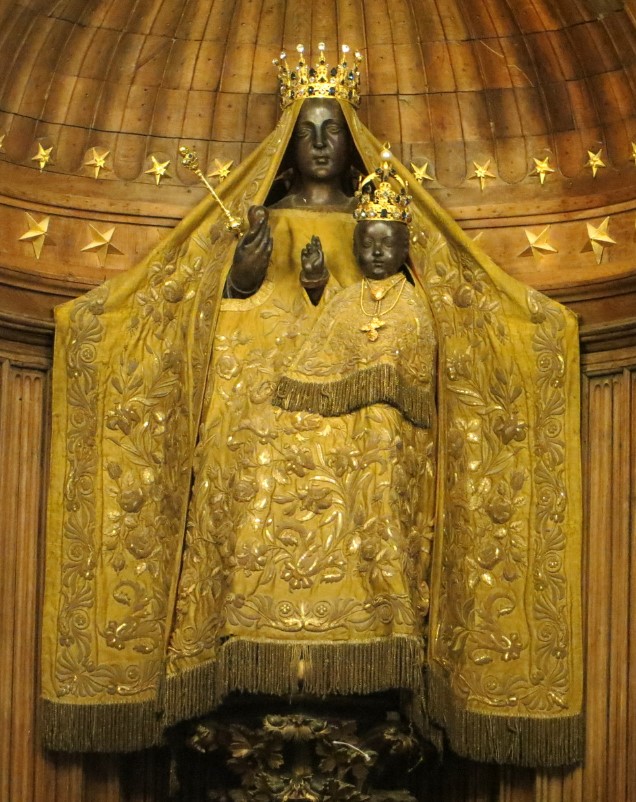
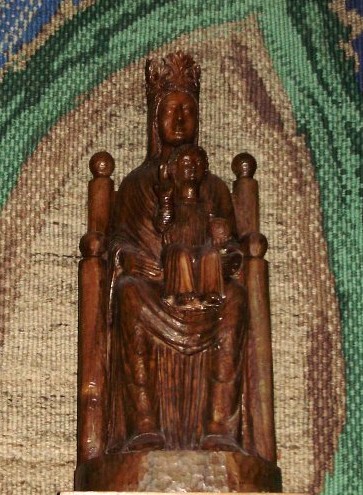
Madone Noire on pillar and Notre Dame de sous-terre
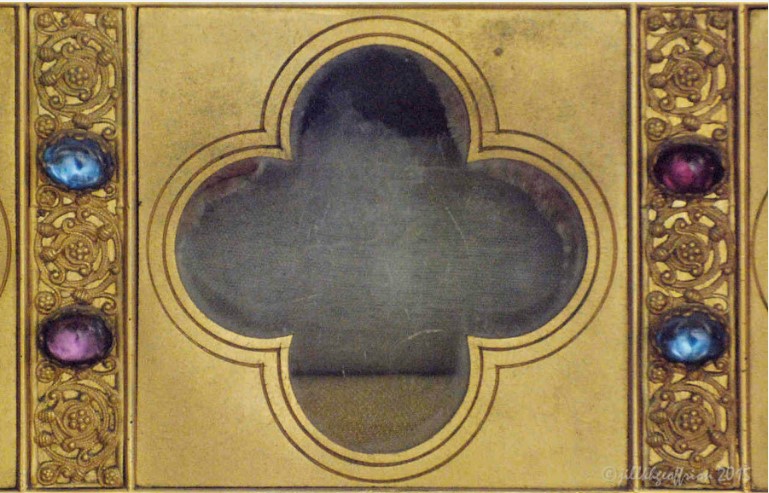
With Palestine pollen in it, dated 1st century, Emperor Charles the Bald gave this piece of oriental silk to Chartres in 876. Its preservation in the 1194 fire, was regarded as miraculous.
.jpg)
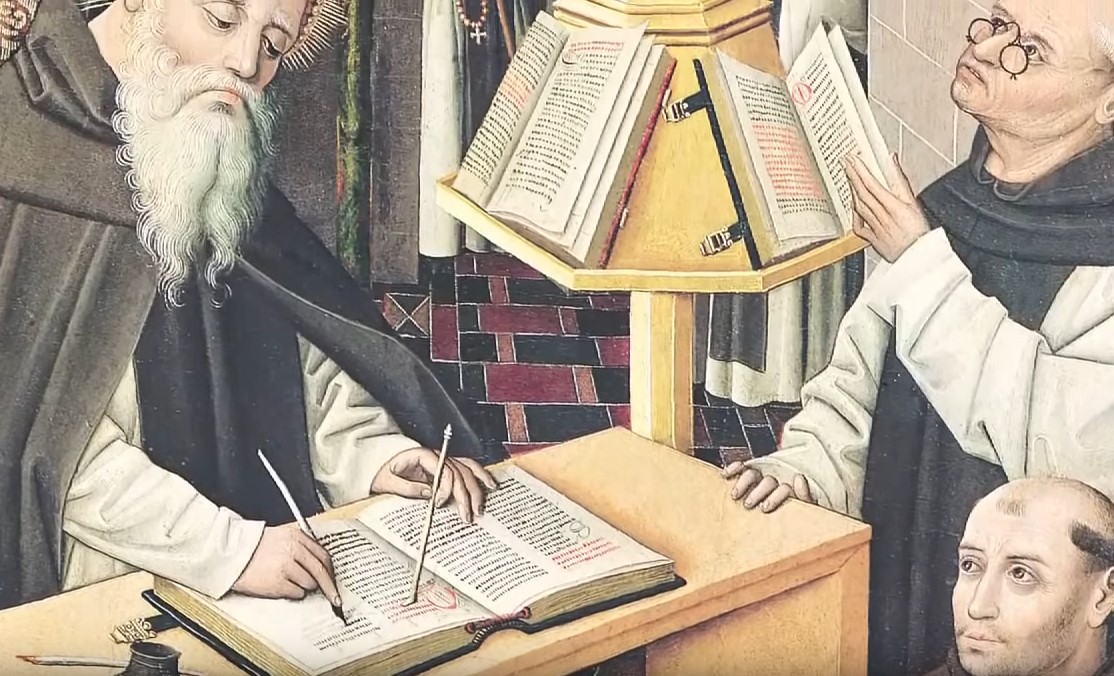
The didactic tone of the monks, in this foremost center of learning, studying the works of Plato, Aristotle, Euclides, Ptolemeus, was later specifically expressed by the builder-initiates in their designs and in the program selected for the creation of the glass and the sculptures, such as botanically accurate leaves and flowers. Religion and science achieved a harmonious balance in the service of God.
Out of this, a vision unfolded of the role of the church in the world that was manifested by Pope Innocent III (1198-1216) who re-established the temporal power of the papacy to an all time height. However, at the end of the Gothic period the teachings of Aristotle were banned in the Cathedral schools.
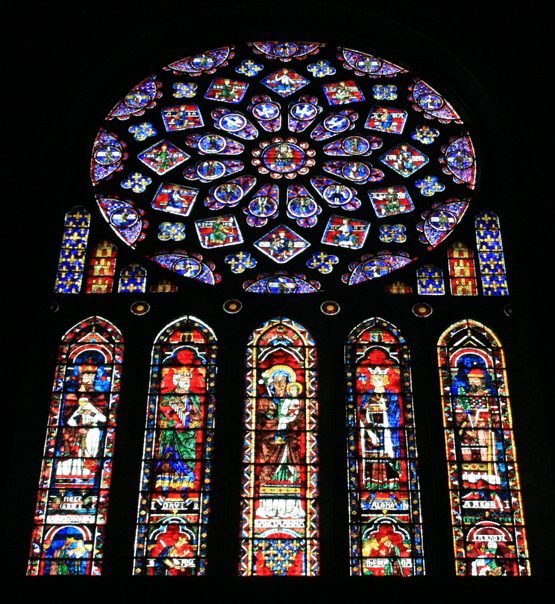
What was thrilling architecturally about this Cathedral was the clerestory, the upper area of the wall supported on the arcades, which took the form of a huge glass casket in which the architecture merely serves as a frame for the stained glass filling the two rows of enormous windows.

South wall window displaying the Zodiac
To provide stability for the daring construction, but also significantly increase space everywhere inside, immense flying buttresses were used in an unprecedented way:

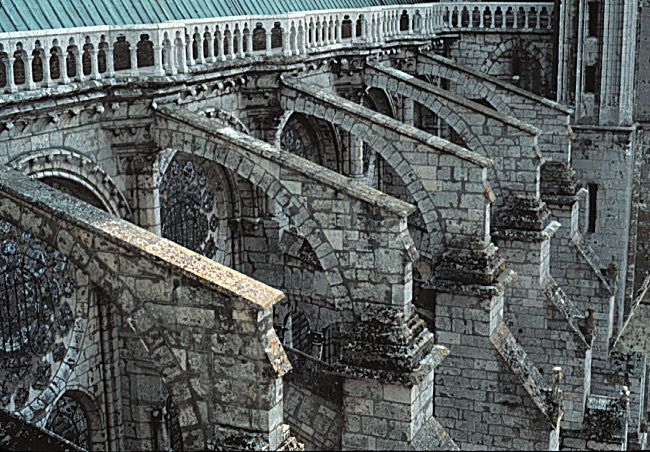

The glass follows a uniform style, with figures in the upper panels related to the legends of saints, and in the lower panels representing the trade guilds and corporations who paid for them. Further donations for the glass and sculptures came from the nobility and gentry:

Chartres Cathedral ranks as a triple masterpiece for its super-hard stone, its cosmically proportioned architecture, and sculptures, survivors of two major fires and numerous wars and revolutions.
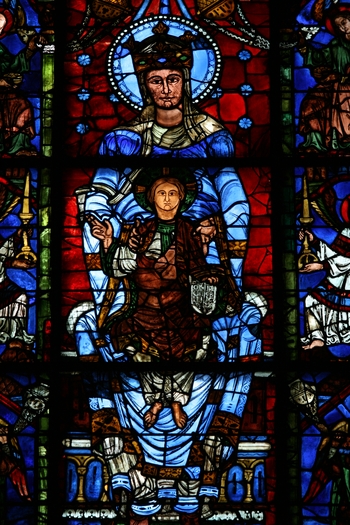
Its last narrow escape from total destruction occurred in 1836, when a fire destroyed the roof timbers and melted the lead. The timbers over the nave were replaced by an iron structure and then roofed over with copper. The original unique and healing 'chartres blue' stained glass can still be felt and admired, especially in the robe of 'Notre Dame' Mary.
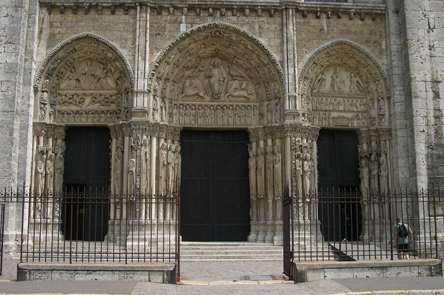
The program was given expression in the sculptures on the West side's Royal Portal of 1150-1175, and on the 2 immense transepts that were added on the north and south facades.
Royal Portal: the left panel represents the Ascension Portal, showing 9 zodiac symbols separated by the labor for each month, and Christ leaving temporal existence and returning to God. The right panel is the Incarnation Portal as the entrance of Christ into the world.

The central portal represents the Christ in Majesty at the Second Coming. He is portrayed inside a vesica pisces -the portal to the new Jerusalem- on the geometric center-line of the entire edifice. Seated on a throne, he is holding the esoteric Book of Life, and surrounded by the symbols of the 4 Beasts in Rev 4:7, and Ezekiel 1:10, as well as Evangelists: a winged man for St. Matthew, a lion for St. Mark; a bull for St. Luke; and an eagle for St. John. The 60° triangles representing the harmonic cosmos out of which he looks into our duality-based 90° rectangles based world. See also the vesica pisces below.
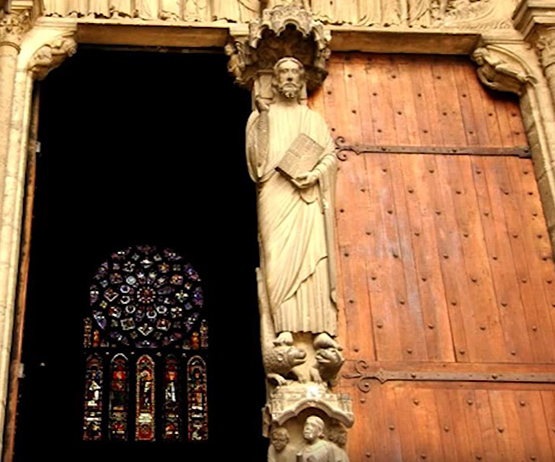

The descended Christ with the book of life,
dominating the Lion and the Dragon/serpent,
representing the ancient solar and lunar forces
Each side is a miniature pilgrimage church, with a west front with 3 portals and porches where figure sculpture stresses the mission of the church to teach and preach. The north portal, contains over 700 figures and shows the old-testament antecedents of Christ. The south side, the side of the Sun (Christ), shows the new testament era of the church. 4500 sculptures adorn all 9 outside wall portals and show the history of mankind, the summa of all essential knowledge. The west facade shows all 10 chakras via the number of pedals equal to the Hindu chakra system:
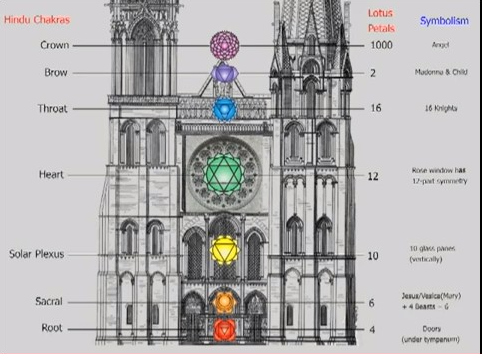
Also the floorplan reflects the chakras in men:
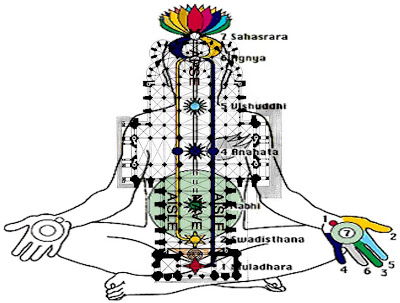
The foundation plan of this Cathedral is based on the Golden Mean Proportion, the Devine Law governing Number, Weight and Measure. The length of the Nave+Choir+Apse vs the Transepts and the distance between pillars are multiples of the Golden Number, derived from the two, golden-mean placed, circles drawn in the ground by a rope+knots+pins, plus the pentagons & diagonals, of their five pointed stars:
5-pointed Twin Stars "holding" the vesica pisces,
the geometrical birthplace of all matter

The 2nd Osirion temple above shows a central platform with 10 large, square columns supporting the roof, with steps up to it on both ends, placed over an aisle dug out to enable to fill it with water.
This temple island, containing the royal tombs, resembles the Egyptian symbol for the primordial mound, representing the 1st creation of matter rising out of the primeval waters, the unmanifest Nun.
Therefore, the geometry of the island has to follow the proportions of the Golden Section, which includes the 5p-star, the symbol of rebirth & regeneration, the procreative, self-generative power of life.
The emphasis on the double pentagon/pentagram aptly symbolizes the belief that the Ruler, after death, returns to his cosmic twin-star. (represented in Egypt as having 5 points)

The Christ Consciousness Grid is a stellated dodecahedron,
comprising of 12 stellated pentagons. See E.

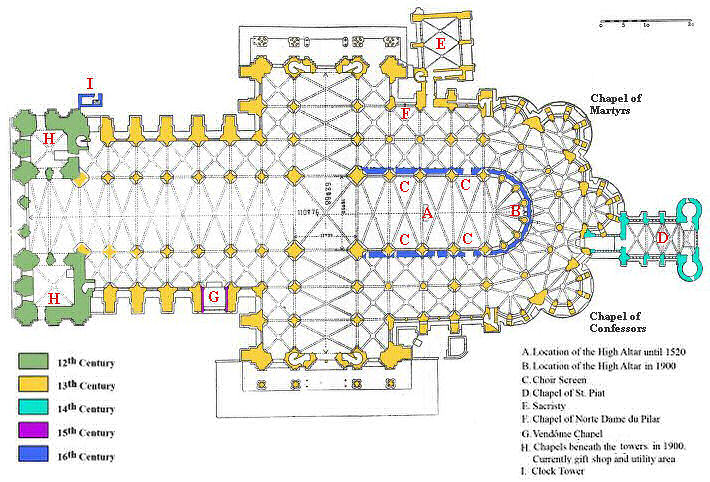
D: Chapel of St. Piat: the large 14th-century flat chevet glass roof: The Resurrection of the Dead and the Last Judgment occupy the compartments of the tympanum, which features a 7-lobed rose. In the center, Christ sits as supreme judge. Around him, 5 angels carry the instruments of the Passion, while 2 others sound the trumpet. To his right and left, the Virgin Mary and St John the Evangelist intercede for human beings. Below, St. Michael weighs souls, and, on either side, 4 small 3-lobed openings depict the resurrection of the dead:


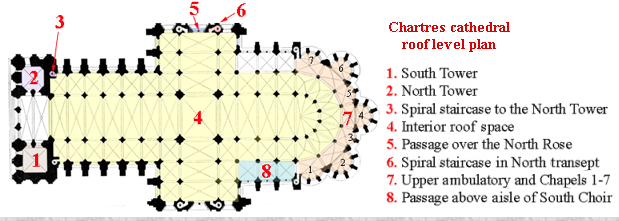
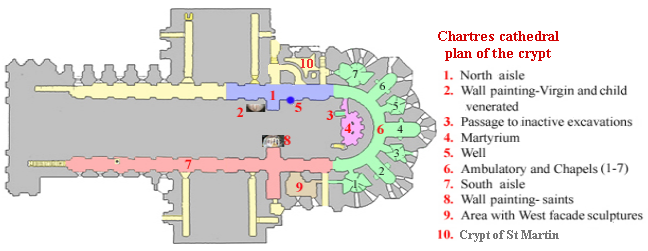

Height of Sun Tower is 365 ft = 365 days/yr.
Moon Tower is 28 ft less = its cycle of 28 days.
West window & Labyrinth are of same proportion/location.

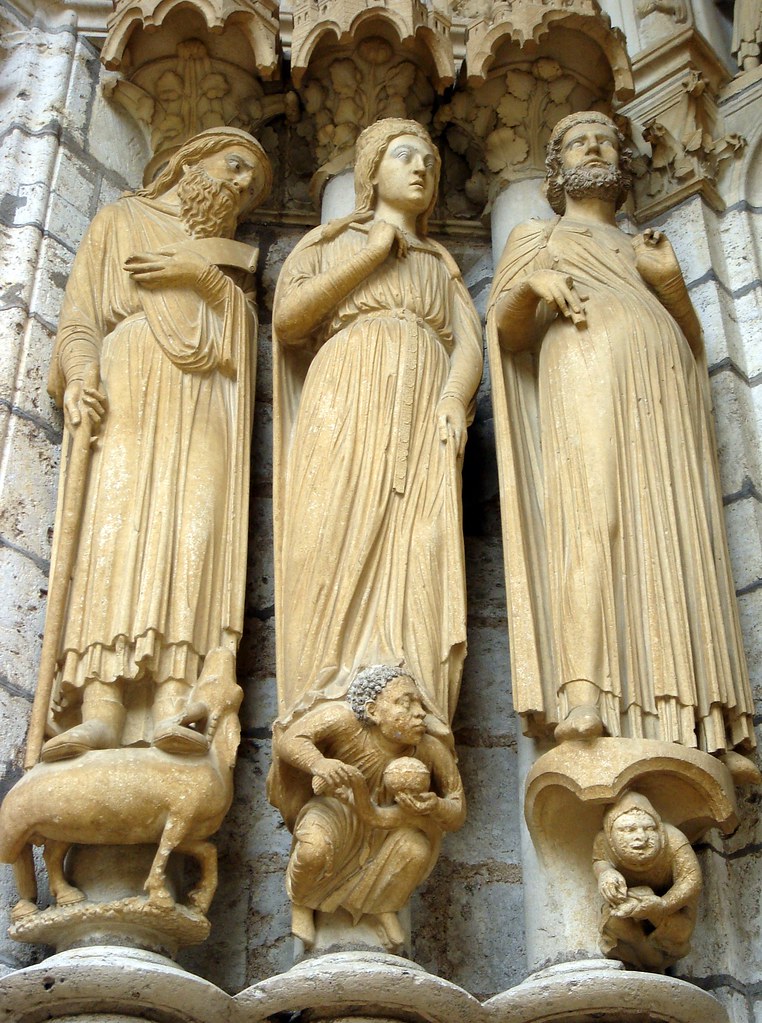
A donkey + a hurdy gurdy, and as a unicorn under Balaam, showing the human as a foolish musician and a foolish visionary? The line connecting them crosses the core of the Labyrinth midway, where man can contemplate and/or dance.
Is our body a mere illusion constructed by our senses, a 4-legged donkey, dangling on strings held by the world of stars?
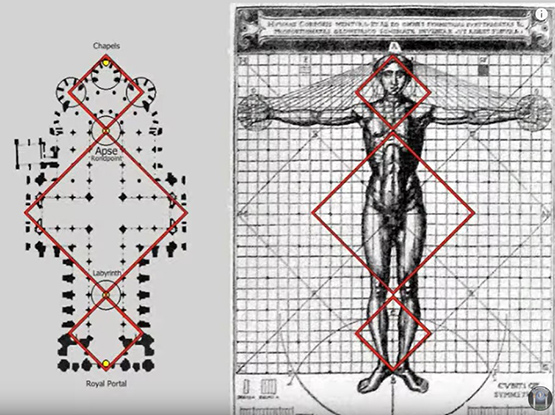
Cathedral and Vitruvian Man 'squared & double-squared'
The Apse and the Labyrinth have the same diameter and thus the same multi-dimensional transcendental Pi (π) factor, thus creating a coherent resonance with their cosmic counterpart.
The 2nd center has a 13th century labyrinth, of 11 circuits, and a 13 mtr diameter. It has 262 mtr winding path of stones, equal to the number of days for human gestation, so as to reach "the next (ز=2.62) dimension" in the center:
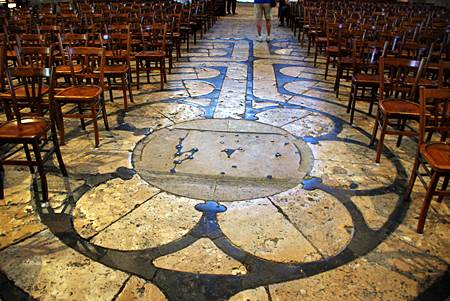

Did the Knights Templar place an image of the Minotaur (human-bull) in its center? Was it removed after most Templars were murdered? Six Templar crosses, lit by candles, on 6 columns surrounding the Labyrinth 'protect the pilgrim on its journey to the center (Jerusalem)':
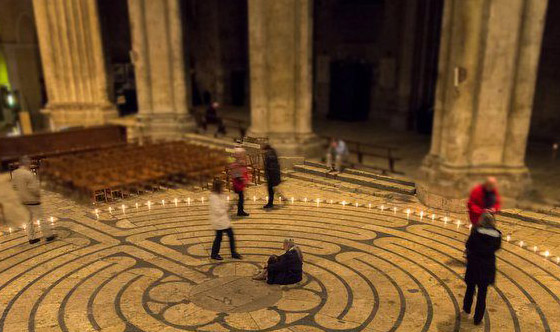
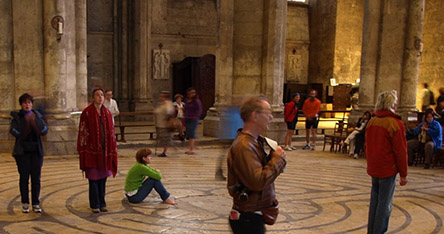
Its center reflects “the Egg of Life”, the symbol of fertility, birth and rebirth. All conceivable musical scales are embedded in its shape and structure. The spaces between cells cause the original music scale of a semi-tone and tone:
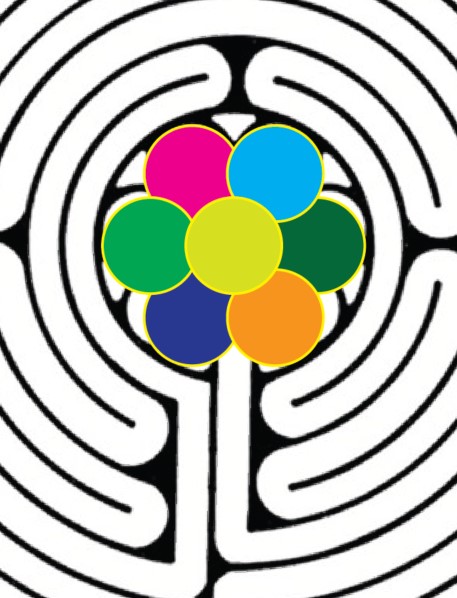
Labyrinth versus Ptolemeus' Wheel of the Cosmos:
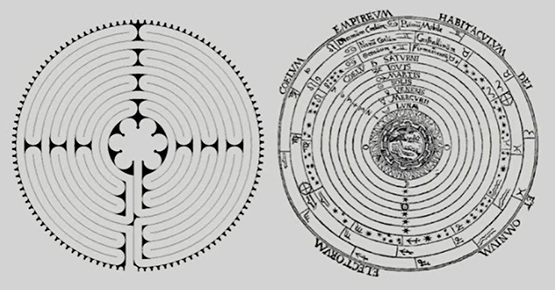
Both the Knights Templar Crusader Long Cross and the ground plan of this Cathedral are in golden-mean proportion. Coincidence?

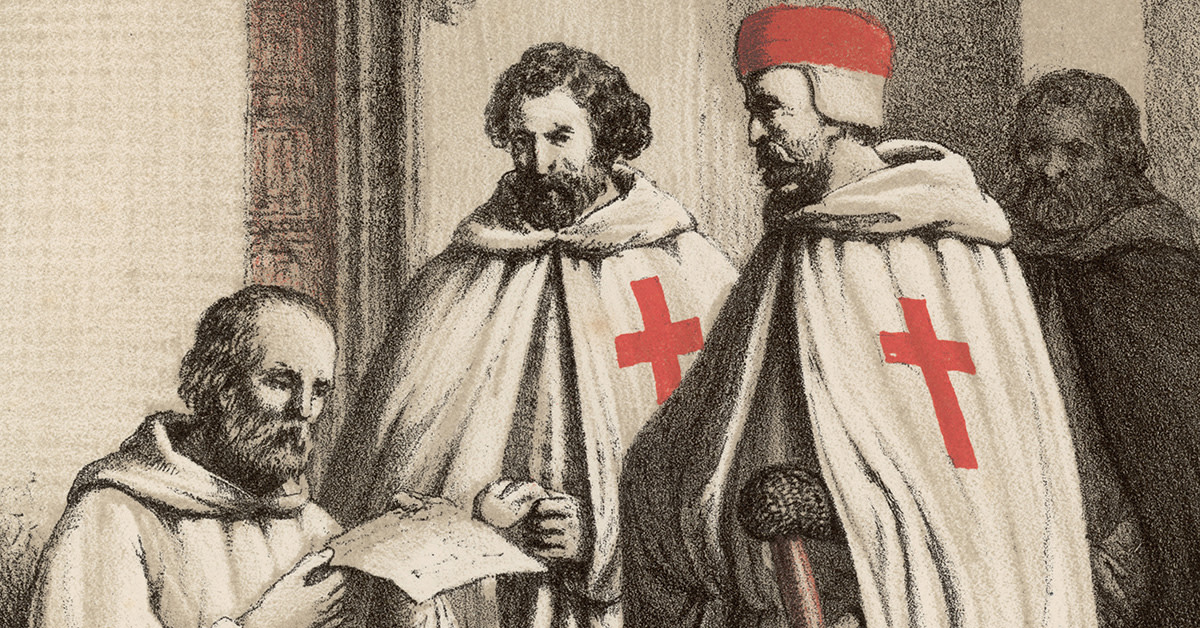
The bottom of the ancient well, with magnetized & energized water, is the cathedral's Sacred Center. It is 37 meters below the place where the altar stood many centuries ago:


Assumption within the apse
The vault is about 37 meters above it. Many windows were replaced by a bishop who wished to be seen in full daylight, following the destruction of the screen in 1763.
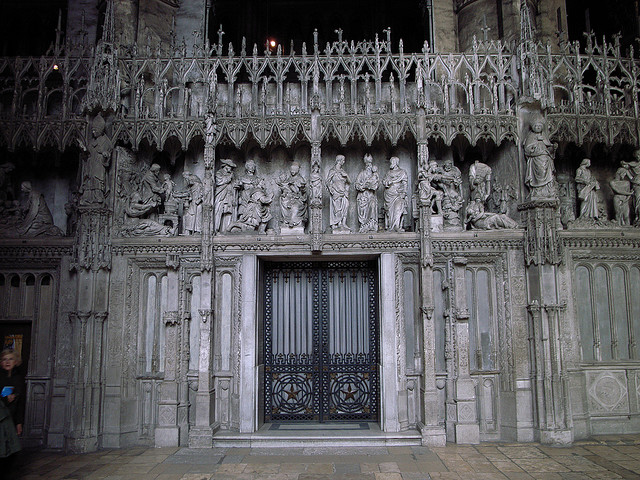
Chartres has become the focus of new kinds of pilgrimages, like dedication to the preservation of the Latin Mass, but also modern ways of connecting to one's inner & outer world.

listening to the organ's music
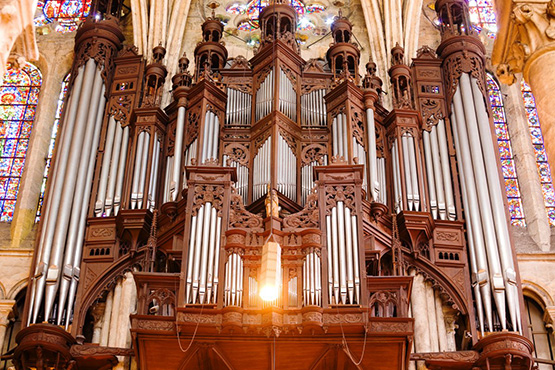
The North side has Jesus holding a cross, the South Rose window has in its center Jesus holding the grail. The West Rose window, the Royal window, from around 1215, has the Cosmic Christ with open arms in its center. See details.
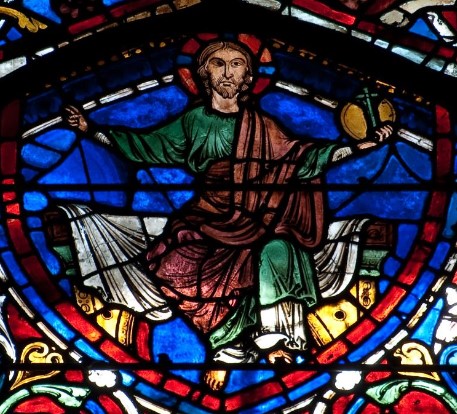
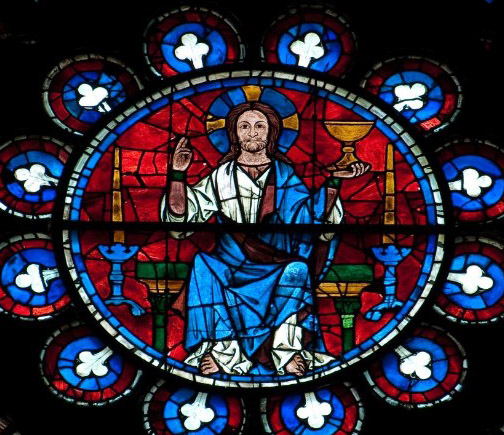

It is sometimes difficult to recall that the Cathedral of the Middle Ages was not only a holy place of prayer, but the centre of a vast ecclesiastical settlement, that it was surrounded by the dwelling places of Canons and priests, by schools of letters and of theology, by halls of judicial administration, and that, in itself, it was often a place of refuge, a fortress in which the inhabitants of the besieged city could gather to make a last, strong stand.
The tendency of the centuries has been to relieve the Church of the cares of temporal government and to place the more technical and unspiritual branches of knowledge under the charge of national schools and lay instructors.
With the passing of the mediæval customs and cares, the great dependencies of the Cathedral disappeared, the "Bishop's City" became a memory, and the Cathedral often remains in solitary mystery and grandeur to suggest its secular and esoteric past and present:
Illumination created by Etienne Guiol


